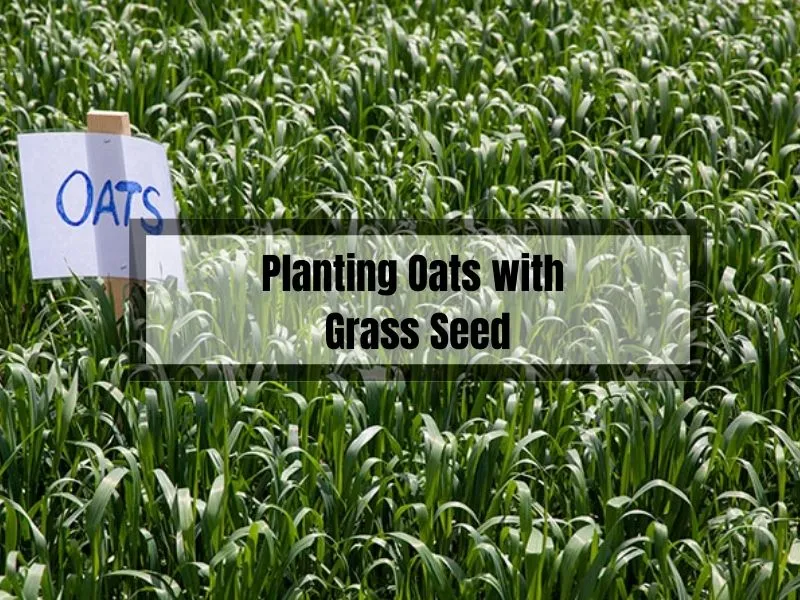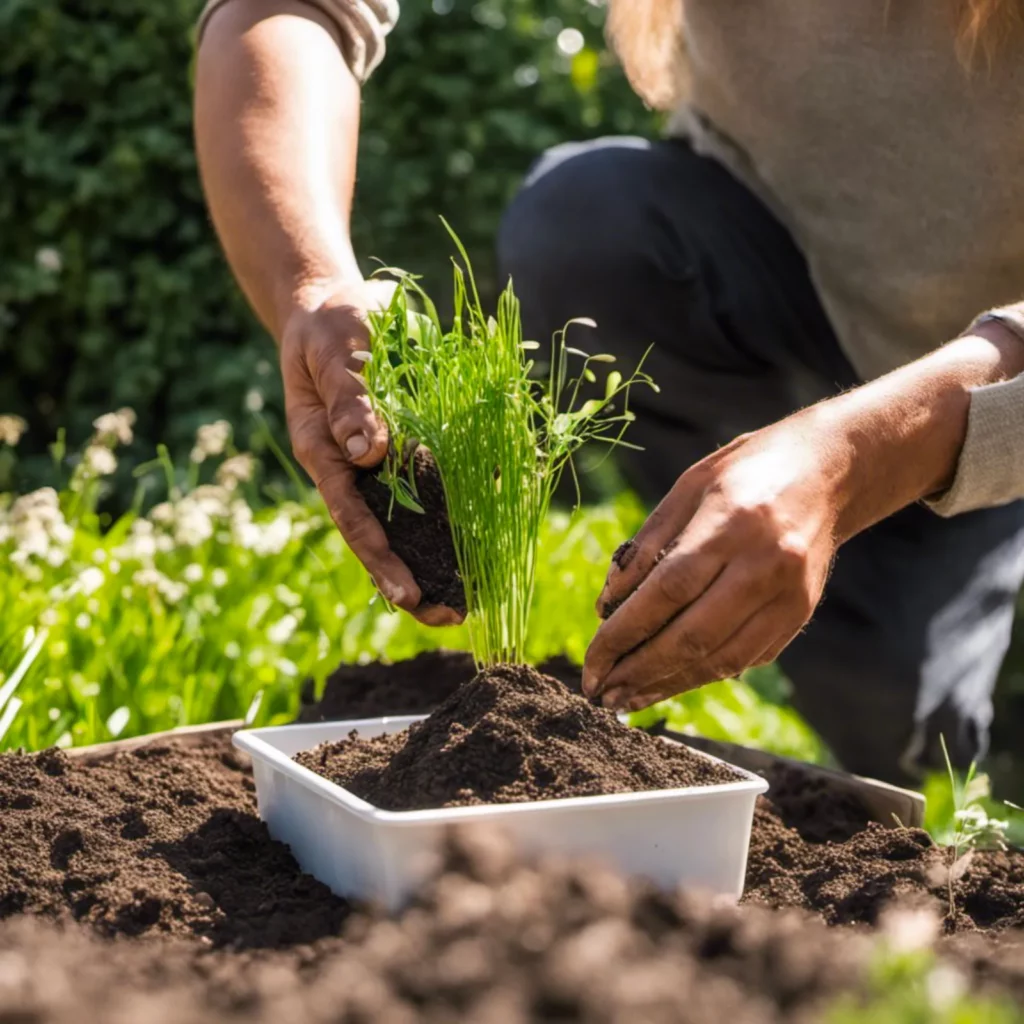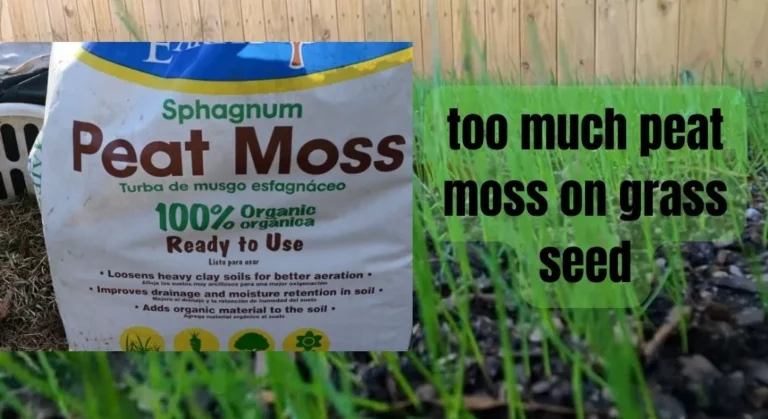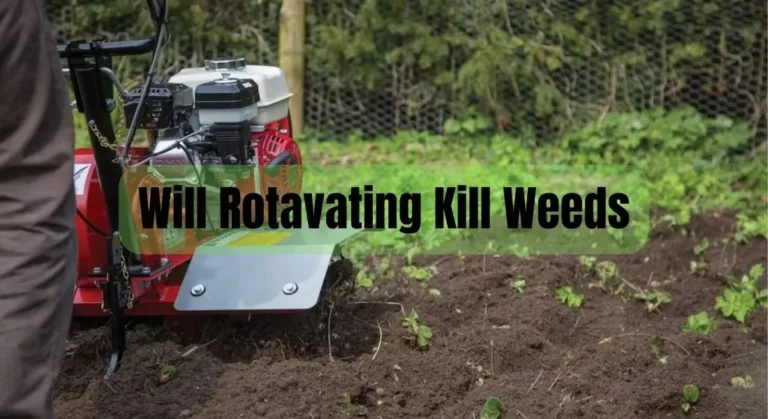Planting Oats with Grass Seed: A Guide to Successful Co-Planting
From Louise: Passionate about gardening, I specialize in plant care and flower knowledge. I’m here to share my expertise and assist with your gardening queries. Feel free to ask any questions or seek advice on lawn care—I’ll respond within 24 hours!
If you’re looking to improve your lawn’s health and appearance, planting oats with grass seed may be worth considering. Oats are a cover crop that offer a range of benefits, including improving soil health, suppressing weeds, and providing added nutrients to your lawn.
In this article, we’ll explore the benefits of planting oats with grass seed and provide step-by-step planting tips to help you get started.
Whether you’re looking to boost your lawn’s health or enhance your landscape, planting oats with grass seed is a popular choice for achieving a healthy, lush lawn. By following our guide, you’ll be able to improve your soil quality and control weeds, resulting in a lawn that is both beautiful and functional.
Key Takeaways
- Planting oats with grass seed can improve soil health, suppress weeds, and provide added nutrients to your lawn.
- By following our step-by-step guide, you can achieve a healthy, lush lawn that is both beautiful and functional.
- Avoid common mistakes by ensuring proper soil preparation, seed selection, and watering techniques.

Planting Oats with Grass Seed
If you’re looking to improve your soil quality and add diversity to your lawn, planting oats with grass seed is a great option.
Oats are a hardy crop that can grow in various soil types and conditions, making them an ideal companion for grass seed.
Benefits of Planting Oats with Grass Seed
Planting oats with grass seed offers several benefits. Firstly, oats have deep roots that help break up compacted soil and improve drainage.
Secondly, oats grow quickly and can help suppress weeds while your grass seed is getting established. Lastly, oats absorb excess nutrients from the soil, which can help prevent them from leaching into groundwater.
When to Plant Oats with Grass Seed
The best time to plant oats with grass seed is in the fall when soil temperatures are cooler, and there is more moisture in the air. This will give your oats and grass seed time to establish before the heat of summer sets in.
How to Plant Oats with Grass Seed
Here’s a step-by-step guide to planting oats with grass seed:
- Prepare your soil by removing any weeds or debris from your planting area and loosening the soil to a depth of at least 6 inches.
- Broadcast your oats over the planting area at a rate of 2-3 pounds per 1,000 square feet. Rake the oats lightly into the soil and water thoroughly.
- Wait for germination. Oats should germinate within 7-10 days. Keep the soil moist during this time to ensure good germination.
- Once your oats have germinated, it’s time to plant your grass seed. Broadcast your grass seed over the planting area at a rate of 3-5 pounds per 1,000 square feet. Rake the grass seed lightly into the soil and water thoroughly.
- Keep the soil moist until your grass seed has germinated and established.
Benefits of Planting Oats with Grass Seed
When you plant oats with grass seed, you can expect a wide range of benefits that can improve the health and productivity of your lawn or pasture. Here are some of the key benefits:
Improved Soil Health
Planting oats with grass seed can help to improve soil health by adding organic matter to the soil as they decompose.
This can help to improve soil fertility, water retention, and soil structure. Additionally, oats have deep roots that help break up compacted soil and improve drainage.
Weed Suppression
Oats can help to suppress weeds by growing quickly and forming a dense mat that shades out weed seeds.
This can help to reduce the need for herbicides and other weed control methods, making it an environmentally friendly option.
Erosion Control
Planting oats with grass seed can help to prevent soil erosion by forming a dense root system that holds the soil in place.
This can help to reduce the risk of nutrient runoff and protect your soil from erosion caused by wind and water.
Forage Production
If you’re planting oats with grass seed in a pasture, you’ll be happy to know that oats are a great source of forage.
Oats are highly palatable and provide a good source of nutrition for livestock. When you plant oats with grass seed, you’ll be able to provide your animals with a high-quality source of forage.
Versatility
Planting oats with grass seed is a versatile option as you can plant oats with a wide variety of grasses, including ryegrass, fescue, and bluegrass. This makes oats a great choice for a wide range of climates and soil types.
Low Cost
Finally, planting oats with grass seed is a cost-effective way to improve the health and productivity of your lawn or pasture.
Oats are relatively inexpensive compared to other cover crop options, and they can provide a wide range of benefits. Plus, when you plant oats with grass seed, you’ll be able to reduce the need for fertilizers, herbicides, and other costly inputs.
Step by Step Guide to Planting Oats with Grass Seed

Choosing the Right Seeds
When selecting seeds, ensure that the oats and grass seed are suitable for your specific climate and soil type.
For example, if you reside in a colder climate, opt for a winter-hardy oat variety. Additionally, choose a grass seed variety that complements the oats, such as Kentucky bluegrass, perennial ryegrass, or tall fescue.
Preparing the Soil
To prepare the soil, clear the planting area of any weeds or debris and loosen the soil to a depth of approximately 6 inches using a tiller or garden fork.
If the soil is compacted, consider incorporating organic matter like compost or aged manure to enhance its texture and fertility.
Sowing the Seeds
After soil preparation, combine the oats and grass seed in a bucket or wheelbarrow.
Use a broadcast spreader or hand-held spreader to evenly distribute the seed over the prepared soil, following the recommended seeding rates. Subsequently, lightly cover the seeds with soil using a rake.
Watering and Maintenance
Following seed sowing, it is crucial to thoroughly water the area. Maintain moist soil, avoiding waterlogging until the seeds germinate, which typically occurs within 7 to 21 days.
Once the seedlings emerge, adjust watering frequency to encourage deep root growth. Fertilize the area with a balanced fertilizer 4 to 6 weeks after planting.
When the grass reaches a height of about 3 inches, mow it carefully, ensuring not to remove more than one-third of the blade height at a time.
Common Mistakes to Avoid
When planting oats with grass seed, there are several common mistakes that you should avoid to ensure a healthy and strong crop.
Choosing the Wrong Grass Seed
Choosing the wrong type of grass seed is one of the biggest mistakes people make when planting oats with grass seed. It’s important to choose a grass seed that is compatible with your soil type and climate.
For example, if you live in a hot and dry climate, you’ll want to choose a grass seed that is drought-resistant.
Not Preparing the Soil
Another common mistake is not properly preparing the soil before planting. Oats and grass seed grow best in soil that is well-draining and has a pH level between 6.0 and 7.0.
To prepare the soil, remove any weeds or debris and till it to a depth of at least 6 inches. Adding organic matter, such as compost or manure, can also improve soil fertility.
Planting Too Deep or Too Shallow
Planting oats and grass seed too deep or too shallow can cause problems. If you plant too deep, the seed may not be able to germinate properly.
If you plant too shallow, the seed may dry out and die. Follow the instructions on the seed packet and plant at the recommended depth to ensure proper germination.
Overwatering or Underwatering
Watering is another important factor when planting oats with grass seed. Overwatering can cause the seeds to rot, while underwatering can prevent them from germinating.
Keep the soil moist but not waterlogged by watering deeply and infrequently, rather than shallowly and frequently.
Not Fertilizing
Finally, not fertilizing your crop can lead to poor growth and low yields. Oats and grass seed require a lot of nutrients to grow, so it’s important to fertilize regularly. Consider using a balanced fertilizer, such as a 10-10-10 or 20-20-20 blend, or a fertilizer specifically designed for oats and grass seed.
By avoiding these common mistakes, you can ensure that your crop of oats and grass seed grows healthy and strong.
Related Posts:
- Does Dollar Spot Kill the Grass? Exploring the Impact of Dollar Spot on Your Grass
- Dollar Fungus: A Common Turfgrass Disease and How to Treat It
Frequently Asked Questions (FAQs)
Can I plant oats and grass seed together in a small home garden?
Absolutely! Planting oats with grass seed can be done in gardens of any size. Just make sure to adjust the seeding rates and spacing accordingly to accommodate the smaller space.
How long does it take for oats and grass seed to grow?
Oats typically take about 100-120 days to reach maturity, while grass seed can take anywhere from 7-30 days to germinate, depending on the variety. Keep in mind that factors like climate, soil conditions, and proper care can affect the growth rate of your plants.
Are there any specific challenges in planting oats with grass seed?
Planting oats with grass seed can be relatively simple, but there are a few potential challenges to be aware of, such as competition for resources, potential shading of the grass seed by the taller oat plants, and managing the different growth rates of the two plants. By carefully selecting compatible varieties and providing proper care, these challenges can be minimized.
Can I plant oats with grass seed as a cover crop?
Yes, planting oats with grass seed can make an excellent cover crop, providing benefits like improved soil quality, increased biodiversity, and natural pest control. Just make sure to choose varieties that are well-suited for your region and intended use.
What are the best practices for planting oats with grass seed in an organic garden?
To plant oats with grass seed in an organic garden, follow these best practices:
Choose certified organic seed varieties.
Use organic soil amendments and fertilizers, like compost and well-rotted manure.
Employ organic weed and pest control methods, like mulching, hand-weeding, and integrated pest management.
Conclusion
In conclusion, planting oats with grass seed can be a rewarding and eco-friendly gardening approach that offers a multitude of benefits.
By selecting the right oat and grass seed varieties, preparing the soil, and providing proper care, you can grow a healthy and abundant crop of oats. Homegrown oats not only offer nutritional benefits but also contribute to a more sustainable and environmentally friendly gardening approach.
As you embark on this journey, keep in mind that patience and planning are key. With a little bit of effort, you’ll be able to reap the rewards of your hard work and enjoy the delicious, nutritious benefits of homegrown oats. So, roll up your sleeves, get planting, and contribute to a healthier, greener future for all of us.
Remember to check out our related posts for more gardening tips and tricks, from trimming to perfection with clematis montana pruning to harnessing the power of a peat moss spreader. Happy gardening!
Related Posts:





